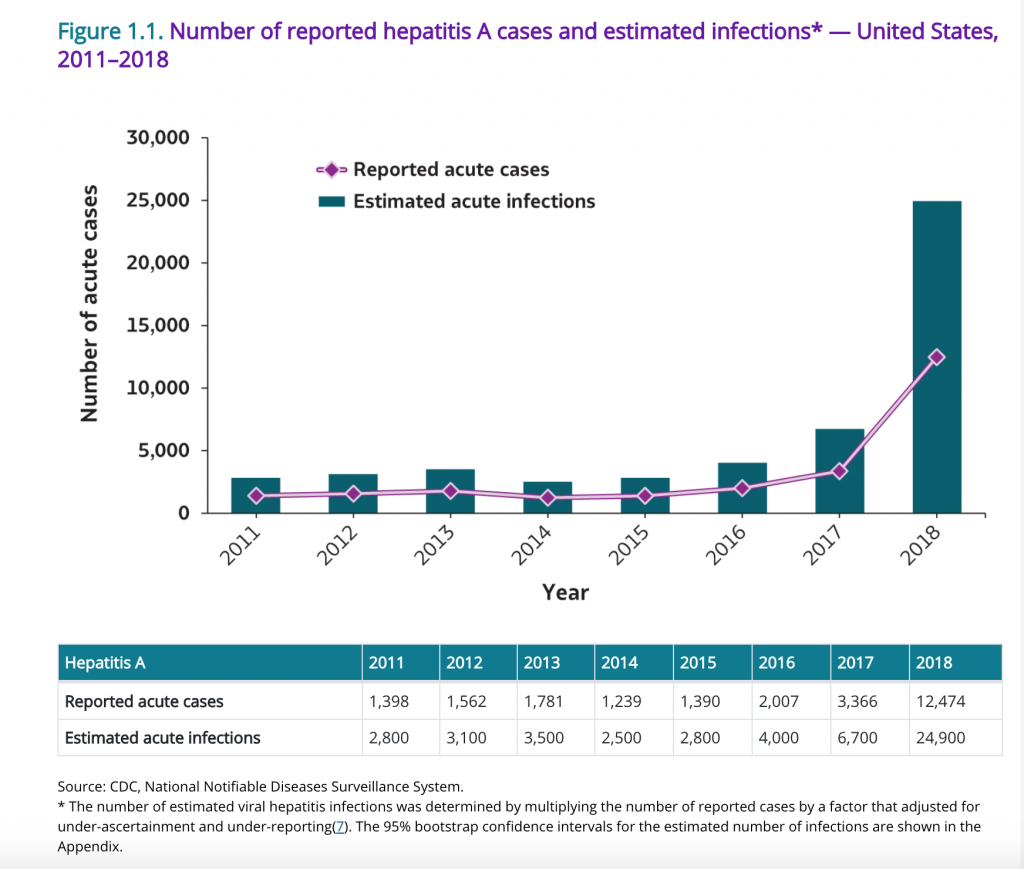When does CDC recommend getting Hep A vaccine? The minimum age is 12 months and then again 6 months later. It is recommended to receive 2 doses between 12 months and 23 months. (cdc.govschedule)
What is Hep A? Hep A is a liver infection that is very contagious. “You’re most likely to get hepatitis A from contaminated food or water or from close contact with a person or object that’s infected. Mild cases of hepatitis A don’t require treatment. Most people who are infected recover completely with no permanent liver damage.” (MayoclinicHepA). Good hand-washing is one of the best ways to protect against it.
What are symptoms of it?
- “Fatigue
- Sudden nausea and vomiting
- Abdominal pain or discomfort
- Clay-colored bowel movements
- Loss of appetite
- Low-grade fever
- Dark urine
- Joint pain
- Yellowing of the skin and the whites of your eyes (jaundice)
- Intense itching” (MayoclinicHepA).
“Hepatitis A is more concerning for the adult population. Individuals over the age at 50 or already have long-term liver disease are at highest risk to develop the most severe form of Hepatitis A.” (nurse.org)
How many cases are there each year in the US?

So what are my changes of getting Hep A? Depends on the year in 2018 there were 12,474 reported acute cases in the US. The population was 327,200,000 people. Your changes in 2018 of getting acute Hep A would have been 1 in 26,231. That is going off of the reported acute cases. If you went off the estimated acute infections it would be about 2x as likely as reported cases. ) So how many deaths are there in the US from Hep A each year?
The table below shows the deaths by age group in the US from 2013 to 2017. The most deaths occur the older you are. For example, in 2017 there were 91 total deaths. Age 0-44 there were 9 deaths, Age 45-64 there were 35 deaths, and Age 65+ there were 47 deaths.

“The most common risk factors (of Hep A) reported in 2017 were injection drug use, person-to-person and food borne outbreaks, and sexual/household contact with a hepatitis A patient.” (cdc.gov)
Now that you know a little more about Hep A, let’s take a look at the ingredients in the Hep A vaccine. In the 2020 Hep A vaccine there is MRC-5 which is a diploid human cell line used to make some vaccines from an aborted fetus. (vaccineingredients)

Let’s look at the Hep A vaccine insert
Some of the side effects include:

“HAVRIX has not been evaluated for its carcinogenic potential, mutagenic potential, or potential for impairment of fertility.” (HepAinsert)
How long does the immunity last after the Hep A vaccine? “The duration of immunity following a complete schedule of immunization with HAVRIX has
not been established.” (HepAinsert)
I hope this gives you some more information and allows you to better understand Hep A.